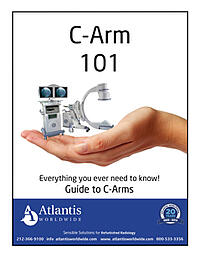Hospitals and imaging facilities are stressed with increasing costs, which means every department is looking for ways to save money. Many are tempted to change service contracts for imaging devices from full coverage warranties to Time and Materials policies or Parts Only policies, believing that this will ultimately save money. After all, full service contracts are very expensive. However, this could be the ultimate example of being “penny wise and pound foolish.”
 The first thing to keep in mind (besides dollar signs) is the fact that radiologists, physicians and patients depend on imaging equipment to work every day. They need high quality images in a timely manner. Any equipment downtime can be disastrous.
The first thing to keep in mind (besides dollar signs) is the fact that radiologists, physicians and patients depend on imaging equipment to work every day. They need high quality images in a timely manner. Any equipment downtime can be disastrous.
A standard service agreement provides both regular maintenance and service for specific unexpected problems or issues. Regular maintenance is actually preventative maintenance—which can prevent a major shutdown due to a little problem that is left to grow worse over time. The longer it’s ignored, the more it will probably end up costing.
Another thing to remember is that a brand new imaging system from an OEM can actually have problems as frequently as a pre-owned system. While it’s not fair, it is a reality. That’s why most OEM systems are sold with an initial warranty year of service, in addition to four additional years of ongoing service. While this kind of warranty is standard, each manufacturer or service provider will cover a different list of components that are included, excluded or included based on a pro-rata calculation.
Typically, a standard service agreement for an MRI includes preventive maintenance (PM) service, as well as general service including parts, labor and cryogen replacement. Some contracts include or exclude coverage of a cold head replacement. Most service contracts do not cover cryogen replacement in the case of an emergency quench.
A standard service agreement for a CT will usually include PM and general service performed. It will also provide coverage for glassware (tube within a usage range).
Here’s another big consideration: With an MRI, CT or any other system, preventive maintenance must also be considered even if you choose to “go naked” by not having a full service contract. As more OEMs and ISOs focus on the constant monitoring of a system, without full coverage, you probably won’t proactively monitor your system and focus on what needs to be reviewed as “Soon to Fail.” It’s also important to remember, that without a contract, you won’t be a “priority” for repairs. Contracted customers usually get first dibs on service.
Other equipment may also have specific coverage, which will be included, excluded or items, which are calculated on a pro-rata basis. For example, even if you purchase your chillers from the OEM or third party along with your MRI, CT or PETCT, the equipment manufacturer never installs them. That means they are very rarely covered by an equipment service agreement, unless it’s listed as a separate line item.
Most equipment service takes place during normal working hours and excludes after hour service, weekends and holidays. For busy facilities, it makes sense to request coverage for after hour service and holiday overtime repairs.
To avoid being penny wise and pound foolish, the best option is to discuss the challenges you may have with your current service contractors. You might also want to talk to the experts at Atlantis Worldwide. They will work with you to develop the best service contract strategy at a price to meet your needs and budget. Contact Us Today!
Some blogs you may have missed:
- 4 Tips On Maintenance & Service for Your Medical Imaging Equipment
- Why are CT Tubes So Expensive?
- Atlantis Extends Imaging Equipment Life with Software Upgrades
- Your MRI and Cryogen Venting
- Extend The Life of Your Medical Imagining Equipment or Replace It?
About the author: Norm Tessell, FACHE




